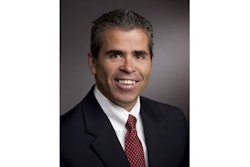Improving safety, reducing waste, and increasing ease of use: for manufacturers that specialize in aseptic filling, these are central goals.
The recent meningitis outbreak caused by contaminated injections from a compounding pharmacy brought safety concerns to center stage, leaving consumers uneasy and motivating regulators to watch manufacturers more closely.
In response, manufacturers are applying new methods and technologies that not only accomplish the main objective of safety, but also provide opportunities for process optimization. These solutions allow companies to offer much-needed reassurance to consumers and meet regulations while also improving their methodologies.
In an effort to learn more about how aseptic filling is progressing, Pharmaceutical Processing spoke with aseptic filling equipment providers and contract manufacturing organizations (CMOs) that offer aseptic filling services.
Safer Solutions
Benoît Verjans, chief commercial officer at Aseptic Technologies S.A., which develops, patents, manufactures and markets equipment that guarantees sterility assurance, explains that while recent safety issues have been problematic, the industry has developed a number of successful solutions.
“Some articles have estimated that the risk of contamination can represent one accident every 100,000 injections, representing probably around 30,000 contaminations in the U.S.” Verjans explains that when these contaminations occur, they are very serious, “with a death rate in the range of 15 percent based on analysis of several hundred of reported outbreaks.” While the total rate of contamination is low, authorities realize that the seriousness of the occurrences calls for increased scrutiny. “Authorities are maintaining and even increasing their requirements for improved safety of operations,” says Verjans. In response to this amplified attention, manufacturers are increasing the use of isolators, increasing control of operation with multiple monitoring processes, and focusing on improving training for operators.
| Safe processes are cultivated by understanding — and possibly overhauling — the many variables that affect aseptic filling. (Photo Courtesy: Aseptic Technologies S.A.) |
“When examining the overall state of aseptic filling in the pharmaceutical processing industry, one must first examine variables that affect aseptic fill/finish,” explains Medhat Gorgy, president and CEO at PYRAMID Laboratories Inc., which offers contract manufacturing, product development, formulation, fill/finish and more for both vial and syringe applications. According to Gorgy, reducing human influence is an important step for the industry, as “The human factor is a major variable in the control of aseptic filling, not the aseptic process itself, the cleanroom, or even the sterilization processes.”
“CMOs must implement new technologies and aseptic processing improvements to control human-borne contamination,” Gorgy says. In order to reach these goals, manufacturers are working to better educate themselves on the various means of contamination while also implementing improved cleanroom garments and strong environmental-monitoring programs.
“There is a lot of attention on aseptic filling, as you can imagine. This is not only attention coming from the U.S., but also in Europe and worldwide,” says Mirko Gabriele, technical business manager at Patheon Inc., a CMO that offers services from preclinical stages to clinical trials, including aseptic filling and lyophilization. In response to this trend, it is becoming more common to use a Quality by Design approach. “There are a lot of international conventions that try to focus the attention on this new way of thinking about aseptic filling.”
Simple Measures
“There is rapid movement toward aseptic filling of pre-filled syringe applications,” says Gorgy. “This is in part due to improvements and development in syringe technologies and materials affecting the product market, the need for greater dosage controls, and for some drugs, minimizing headspace area.”
Giuseppe Cassisi, VP global business management at Patheon Inc., agrees that manufacturers are increasing adoption of easier-to-use, premeasured solutions. “Most of the biotech companies are now looking for prefilled syringes and cartridges, especially cartridges because the filling volume is limited, and they need to administer this product, which is very expensive to produce, in the best way they can … without wasting product.”
In addition to the safety of the patient, increasing ease of use for medical practitioners is also a motivational factor for manufacturers. “Easier packaging like prefilled syringes and blow-fill-seal containers are developing to replace containers which are difficult to handle like the glass ampoules (it is difficult to cut the head and there is a significant risk of breakage) and glass vials (it is difficult to withdraw the aluminum cap and to pierce a narrow area),” says Verjans.
Continuous Improvement
Aseptic filling has noticeably advanced, but as the industry continues to adapt, new changes appear to be around the corner. “With the emergence and development of new robust technologies, several changes will appear, like changes to packaging components, moving from glass to polymers, or changes in equipment designs,” says Verjans.
| The incorporation of robotics and instrumentation in aseptic filling processes can help decrease human interference, thereby reducing the risk of contamination. (Photo Courtesy: Aseptic Technologies S.A.) |
“Besides these changes, I see a major strategic change related to the location of the aseptic filling process,” Verjans continues. “Until now, we see large pharmaceutical sites being responsible for the production of pharmaceutical drugs to be delivered in a large area if not in the entire world.” Previously, this approach made large-scale economies achievable when producing bulk and performing aseptic filling at the same location, eliminated the need to perform costly technology transfer and to maintain in-depth know-how for the complex process, and lowered the risk of batch rejection because the equipment ran more regularly.
As fresh solutions enter the market, however, these new solutions offer new possibilities. “With ready-to-use aseptic filling technologies like blow-fill-seal and the closed vial technology, these advantages are much less obvious and therefore new strategies may be envisaged, in particular the setup of local aseptic filling units receiving their bulk from a central production facility.” Verjans says that a more local approach could result in transportation of small-weight material and small-volume material, opportunities to fill several products locally on the same line, fast and flexible response to market need thanks to a closer presence to the market, and perhaps the elimination of the management of multiple final products due to country diversity.
Gabriele notes upcoming changes that may positively impact safety. “I can maybe foresee reducing as much as we can the number of personnel working with very critical processes; reducing the possibilities for contamination of the product.” This is “also true on the basis of the new features of aseptic filling, so there is a lot of attention on suppliers to see how they are fine-tuning equipment so that it can be set up or controlled in a remote manner, limiting the human intervention along filling.” In this way, Gabriele explains that this trend is not only being observed from “a procedure prospective in the aseptic filling site, but it is also a real trend with equipment suppliers.”
“This is also a technical barrier,” adds Cassisi, “meaning that in the future, you would need a lot of specialization as a contract manufacturer: It will not be easy to enter this sector.” Cassisi notes that more specialization, expertise, and money are needed, “because it is an investment to build the proper sterile suite and plan. You do need a plan, and not all companies can do it.”
Overall, it seems that the industry’s recent trend toward growth will continue. In the future, Gorgy predicts that “There will continue to be an increased need for aseptic filling because of the increase in the number of biologic drugs in development, an increase in single-dose, self-administered pharmaceuticals, and closer regulatory scrutiny of all suppliers due to enhanced awareness by the recent tragedy in the compounding pharmacy.”
While recent media attention has put aseptic filling under the spotlight, it is clear that companies are taking regulatory pressure and turning it into progress.























